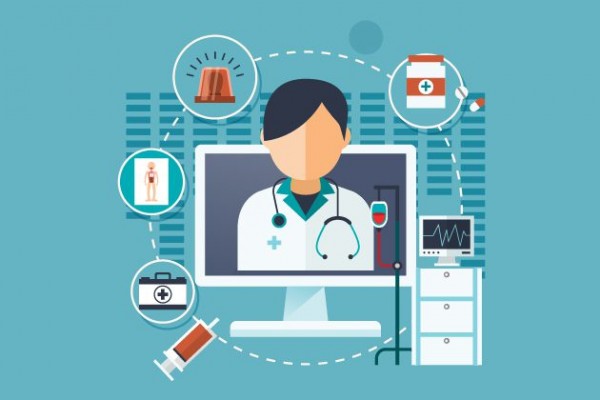The Top 3 Digital Health Trends to Watch In 2018
December 21, 2017
Source: fortune
 781
781

Digital health broke out in 2017. We saw more investment than ever before: Over $4.7 billion flowed into a record number of companies. While these record-breaking investments underscore the enthusiasm for new digital health solutions, another revolution was quietly happening just outside the spotlight.
Earlier generations of innovation began to make a real impact in both the patient and physician experience. There was also widespread recognition in the provider community that health care simply can’t continue to lag years behind the rest of the world in the speed of IT adoption. This is the basis for some of the biggest trends we see taking shape and making a significant impact in 2018:
Telemedicine is taking off—for real this time
Remotely diagnosing and treating patients via telemedicine (the use of telecommunication and IT to provide health care) will grow fiercely in 2018 and impact nearly all facets of health care. More doctors will be able to see more patients in a much shorter timeframe, irrespective of their physical locations. As telemedicine adoption expands, it will be driven by stronger electronic health record (EHR) integration, and the growth of urgent care operations.
Patients will see big benefits. Telemedicine will provide greater convenience and better access. Patients won’t have to take time away from work to be seen by a doctor, and those located in rural areas—where physician shortages are very real—will enjoy similar access to high-quality care regardless of where they live.
Data (sharing) will become standard in clinical settings
Big Data will change monitoring and treatment, as information from wearables and other medical devices gets integrated directly into the EHR. Wearable fitness devices that track heart rate, sleep activity, and other vital statistics will now give physicians far more insight into their patients’ day-to-day health status and chronic conditions, and ultimately help them provide better care.
Tech giants like Apple made big, early bets in this area, and they are starting to pay off. For example, the Apple Watch recently received Food and Drug Administration (FDA) approval for mobile heart rate monitoring, and shortly after, Apple announced a large-scale atrial fibrillation study to be conducted in partnership with Stanford Medicine.
Consumer tech brands will continue to drive this adoption within the health care system. EHR vendors have scientifically invested in this area, and large institutions such as the University of California are developing interoperability standards for device data across campuses. With this foundation, we’ll see more progress in this area than ever before in 2018.
Health care closes the “AI gap”
We will see AI play a more significant role in diagnosing conditions. Whether it’s used in radiology software to transform medical imaging diagnostics for radiologists or in the emergency room to quickly diagnose the nine most common emergency medical conditions, AI and algorithm-driven diagnostics will prove the power of processing in-depth health data in real time. Next year, we will see fewer AI fails and more AI wins than in years past.
In 2018, one thing will remain constant: The digital health field will continue to grow. We will see more of the consumer technology already in use merge with patient care, as measurables such as heart rate, blood sugar levels, and sleeping trends can be tracked with gadgets from brands like Apple, Fitbit, and Dario. The longer-term development of AI still needs work. But eventually we will see a more cohesive relationship form between doctors and health technology that ultimately improves patient care.
Amit Phull is the medical director at Doximity.
By DduRead more on
- Things to Know before Buying Newborn Baby Incubators March 31, 2022
- Highly Resistant Food Poisoning Bug Responds to Antibiotics September 6, 2018
- Smartphone Based Diagnosis to Identify Mosquitoes Transmitting Infection September 5, 2018
- 3 Natural Plant Extracts Manufacturers on Drugdu.com September 4, 2018
- Shenzhen Chuanggan – Health Assessment Facility Supplier September 4, 2018
your submission has already been received.
OK
Subscribe
Please enter a valid Email address!
Submit
The most relevant industry news & insight will be sent to you every two weeks.



